|
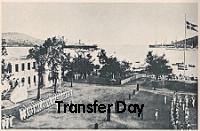
Transfer Day
Transferday of the Virgin Islands from Denmark to the United States 1917
Transferday video 1917
|
|
The 31st of March is recognized every
year as "Transfer Day" in the United States Virgin Islands. This
day commemorates an event that occurred over eight decades ago, when the
Danish West Indies were formally ceded to the United States by Denmark;
thus, becoming the U.S. Virgin Islands, in exchange for twenty-five
million dollars. The United States' interest in the Virgin Islands was
primarily for their strategic location, while any economic benefits were
secondary. The islands represented a much needed foothold in the Caribbean
for the American navy, and later were looked toward as a base to guard the
Panama Canal. American negotiations with the Danish government can be
characterized as ones of strategic diplomacy. All offers of proposed
purchase came on the heels of American military conflicts.
|
American interest in the Virgin Islands dates
back to as early as the mid-1860's. At the eve of the Civil War, budding
American imperialism, and the need for a Carribean naval base, prompted
Secretary of State William H. Seward to begin to investigate the islands
as a possible coaling station for U.S. naval and merchant vessels. On
October 24, 1867, after nearly two years of extensive negotiation and a
visit to the islands by Seward, himself, the Danish government ratified a
treaty, in which Denmark would cede the islands of St. Thomas and St. John
to the United States. The price was to be seven and a half million dollars
in gold, provided the treaty received the consent of the islandsí
population. Unfortunately, within a year the islands were visited by a
hurricane, an earthquake, a tsunami and a fire.
|
|
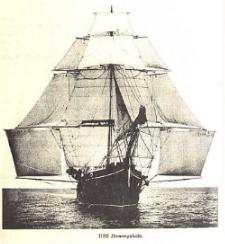
|
The tsunami was so severe that it left the
steamer, the U.S.S. Monogahela (pictured at left), Commodore Bissel, and its crew, stranded on the Frederiksted wharf. However, for
more than two years the treaty failed to receive the ratification of the
United States Congress in response to the wave of natural disasters, the
imperialistic overtones of the treaty, and concerns over the possible
impeachment of President Andrew Johnson.
|
By the end of the Spanish American War, Secretary
of State John Hay expressed renewed interest in the Virgin Islands to the
Danish government. Beginning on January 29, 1900, and over another two years
a new treaty was negotiated, in which the Danish government would cede the
islands of St. Thomas, St. John and St. Croix to the United States for the
sum of five million dollars. The treaty was ratified by the U.S. Congress.
However, the Danes returned the thirty year-old diplomatic insult, and
neither house of the Danish legislature ratified the treaty.
|
|
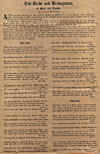
|
Such diplomatic fencing caused the following the satirical poem at left to appear in a
local newspaper. Click Here to read copy of the original, or click
on the picture to view an enlargement.
|
|
Subtle efforts to negotiate the purchase of the Virgin Islands by the
United States continued after the failure of the Treaty of 1902. However,
by 1915 American interest had become heightened by fears of the impending
crisis in Europe. The General Board, headed by Admiral Dewey informed
Secretary of State Robert Lansing, that the purchase of the islands would
not be advantageous as the site of an American naval base in light of the
recent acquisition of Puerto Rico, but that the purchase would be wise in
order to deter any other power from gaining bases in the Caribbean. Dewey,
felt that this tactical defense of the Panama Canal was just politically
by the Monroe Doctrine and by increased German efforts to consolidate the
islands through commercial, diplomatic or perhaps even military means.
In March of 1916, Secretary Lansing sent a drafted treaty to the Danish
Ambassador in Copenhagen Dr. Maurice Egan, offering twenty-five million
dollars in gold coins for the islands, with instructions to deliver the
proposal to the Danish government. On August 14, 1916, at the Biltmore
Hotel in New York City, a revised treaty was signed by Danish Minister
Constantin Brun and Secretary of State Lansing. The U.S. Senate approved
the treaty on September 7, 1916 and by December 21, 1916 the Danish
Rigsdag had approved the treaty as well. Finally, on January 17, 1917 the
treaty ratifications were exchanged and the treaty finalized.
The official transfer of the Danish West Indies to the United States
did not occur until 4:00 PM on March 31st, 1917, when a formal
ceremony was held in the islands. At the State Department a U.S. Treasury
Warrant for twenty-five million dollars was given to Danish Minister Brun.
|
|
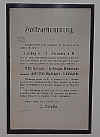
|
The document pictured at left is an original proclamation
from the Danish town of Helsingoer, calling for a public referendum on the
14th of December, 1916, regarding the sale of the Danish West Indies.
|
|
The formal ceremony is well chronicled in the Saturday, March 31, 1917,
edition of the St. Thomas Bulletin. The article is copied below.
|
|
Program
OF TRANSFER CEREMONY.
(Copied from an Actual Newspaper Account)
|
|
On the day fix for the formal transfer of the Danish West India Islands
to the United States of America the following ceremony will take place at
the hour fixed -4 p.m. local time.
The transfer takes place at the same time in all three
islands.
The formal transfer, mentioned in 4 of the Convention, of all
the islands to the Representatives of the United States of America,
Commander Edwin T. Pollock, takes place at St. Thomas through the
undersigned Governor as Representative of His Majesty Christian the Tenth
of Denmark.
The formal act of transfer takes place at the premises in
front of the military barracks.
A guard of honor from the cruiser Valkyrien under the command
of an officer and with the band on its right wings draws up in front of
the barracks, with their back to the building, and the American guard of
honor draws up right opposite facing the Danish guard. The
non-commissioned officer in acting charge of the barracks and the gun crew
take their stand at the salute-battery, and men designated to lower and
hoist the National Flag of their respective countries take their stand at
the flag-staff.
The officials or those specially invited to attend the
ceremony take their stands as follows, turning their back to the fort:
Nearest to the Kings Wharf the officials and then the members
of the Colonial Council, the Consular body and other parties invited.
When the Representative of the United States leaves the
American man-of-war a salute of 15 guns is fired from the "Valkyrein"
flying the United States Flag from her fore-mast, and the same salute is
fired from the fort on the landing of the Representative.
On his landing he is received by the Governor and the
Colonial Secretary together with whom he passes along the front of the
Danish guard-of-honor, pass the officials and those specially
invited, before the front of the American guard-of-honor, and thereafter
to the barracks officer-quarters, where protocol regarding the transfer is
signed.
This being accomplished the Governor takes his stand in front
of the Danish guard-of-honor, the United States Representative in front of
the American guard-of-honor. In the name of His Majesty King Christian the
Tenth, the Governor proclaims the islands transferred to the United States
of America upon which the guards-of-honor present arms, the Danish
National Flag is lowered while the Danish band plays the National Anthem,
and a salute of 21 guns is fired from the salute battery and all the
men-of-war.
The guards-of-honor change places. The Representative
of the United States proclaims the islands taken into possession, the
guard-of-honor present arms, the American National Flag is hoisted while
the American band plays the American National Anthem and a salute of 21
guns is fire from the battery and all the men-of-war.
After prayer by Bishop E. C. Greider the Agent for the United
States, Commander Edwin T. Pollock, U.S. Navy, announced his being duly
appointed Acting Governor of the Virgin Islands of the United States of
America.
The retired Governor having passed the front of the Danish
guard-of-honor, the guard marches off.
The newly appointed Governor then returned to the U.S.S.
Hancock, whereupon a salute of 17 guns was fired in his honour as acting
Governor of the Virgin Islands of the United States of America.
At St. Croix the proclamation is read in Christiansted by the
Dispatching Secretary, in Frederiksted by the Policemaster and the
barracks analogically with the change at St. Thomas takes place under the
charge at respectively the Chief of the Gendarmery Corps and the
Commanders of the Detachments.
At St. Jan the proclamation is read by the Policeassistant
whereafter the changing of the flag takes place. |
|
|

|
If you wish to view the Transfer Program in its original form, click on
the picture for an enlargement.
|
|
After the Dannebrog was
lowered over Government House in the Virgin Islands for the last time, the
flag was made into several smaller ones. The one pictured was given the
Reimund Baumann a former judge and governor of the Danish West Indies.
This flag was given to the Danish Consulate of the Virgin Islands, by
Solange Baumann wife of Harold Baumann, the son of Reimund. Special thanks
to her for her generosity in allowing others to view this historical item.
|
|
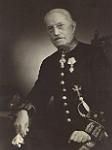
Reimund Baumann
|

Baumann's Minature Dannebrog
|
|
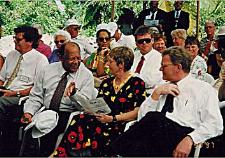
|

|
|
Pictures from 1997 Transfer Day Ceremony:
|
Left to Right: First Row,
Ambassador Hans Grunnet (N.Y.)
Ambassador Terence A. Todman
Mrs. Niels Helveg Peterson, and her husband, Minister Foreign
Affairs
Niels Helveg Peterson (DK)
Back Row,
Grace Blak, and her husband Consul General Soren Blak |
Consul General Soren Blak receives the Dannebrog from
a U.S. officer in the formal ceremony commemorating Transfer Day. |
|

|
|
Consul General Soren Blak deilvers a speech
outside the Virgin Islands legislature during the 2001 Transfer Day
activities.
|
|
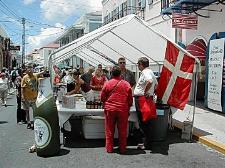
|

|
| The booth sponsored yearly by the Danish Consulate
features samples of Danish products donated by local distributors. |
Virgin Islands' Governor Charles Turnbull and Danish Ambassador
Ulrich Federspiel from Washington help hang one of over a hundred
street signs donated by the Friends of the Former Danish West
Indies, in Denmark. |
Even though the Virgin
Islands are no longer a possession of Denmark, the islands still
maintain a warm relationship with the Danish people. The Danish
Cemeteries, the forts and the ruins of the former sugar plantations
all bear testimony to a rich Danish past. This heritage is
celebrated every March 31st on Virgin Islands Transfer
Day. |
|